Water-harvesting parking lot, garage, and driveway image gallery
Directing pavement runoff to boost pavement-side life, while increasing available rainfall multifold…
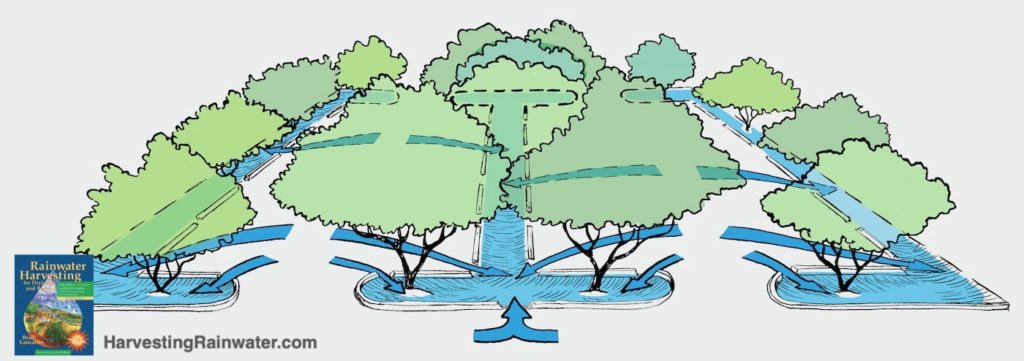
Blue arrows denote water flow.
Illustration: Joe Marshall.
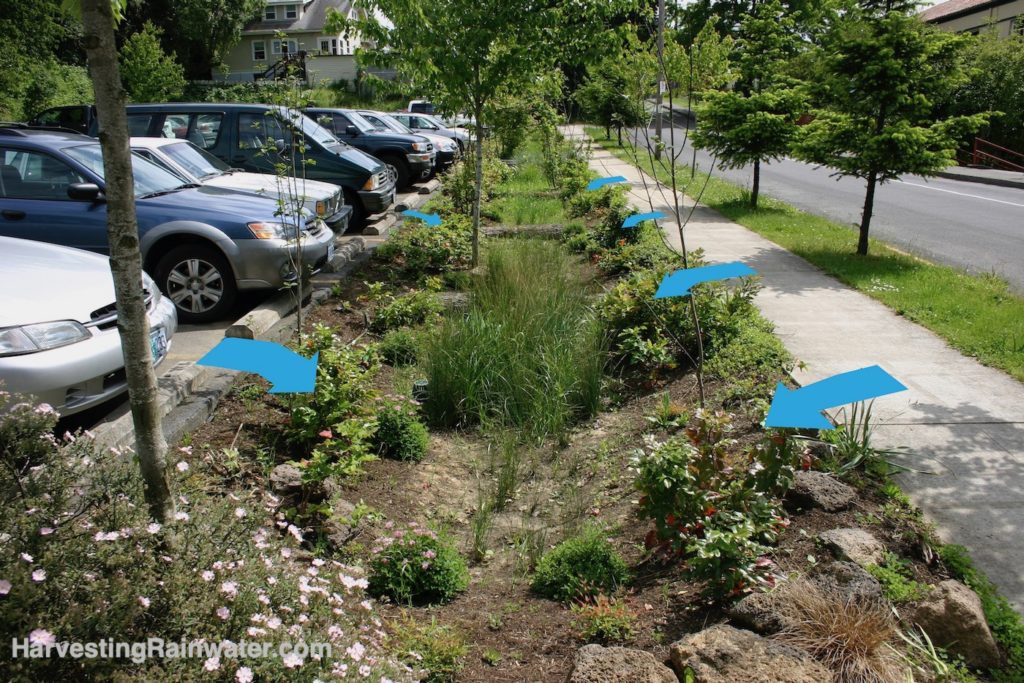
Portland, Oregon
Blue arrows denote water flow.
Photo: Brad Lancaster
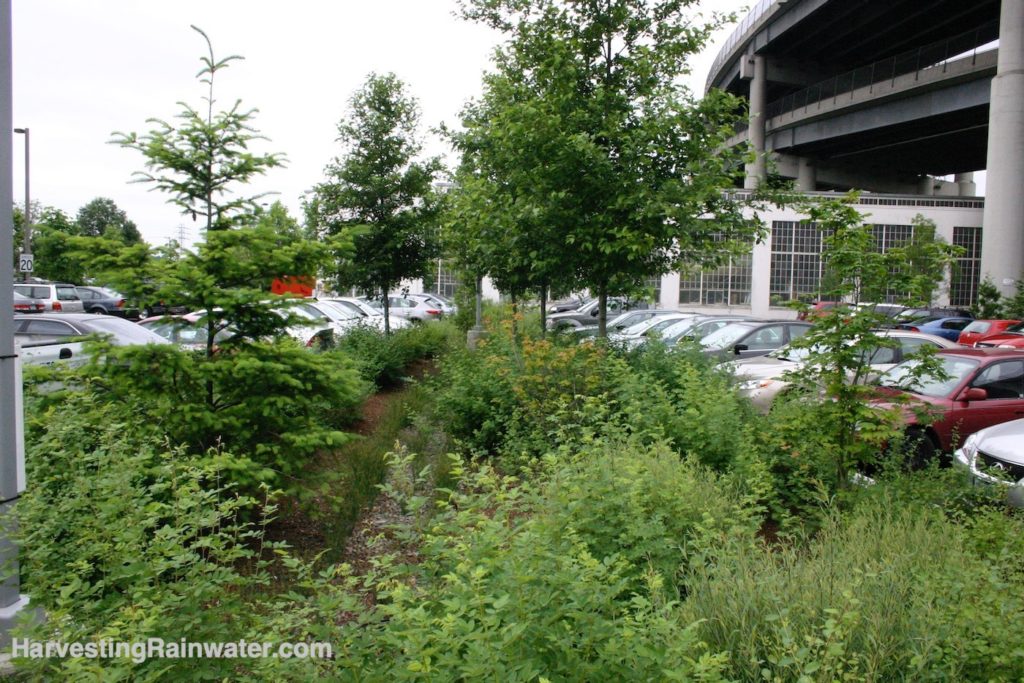
Photo: Brad Lancaster
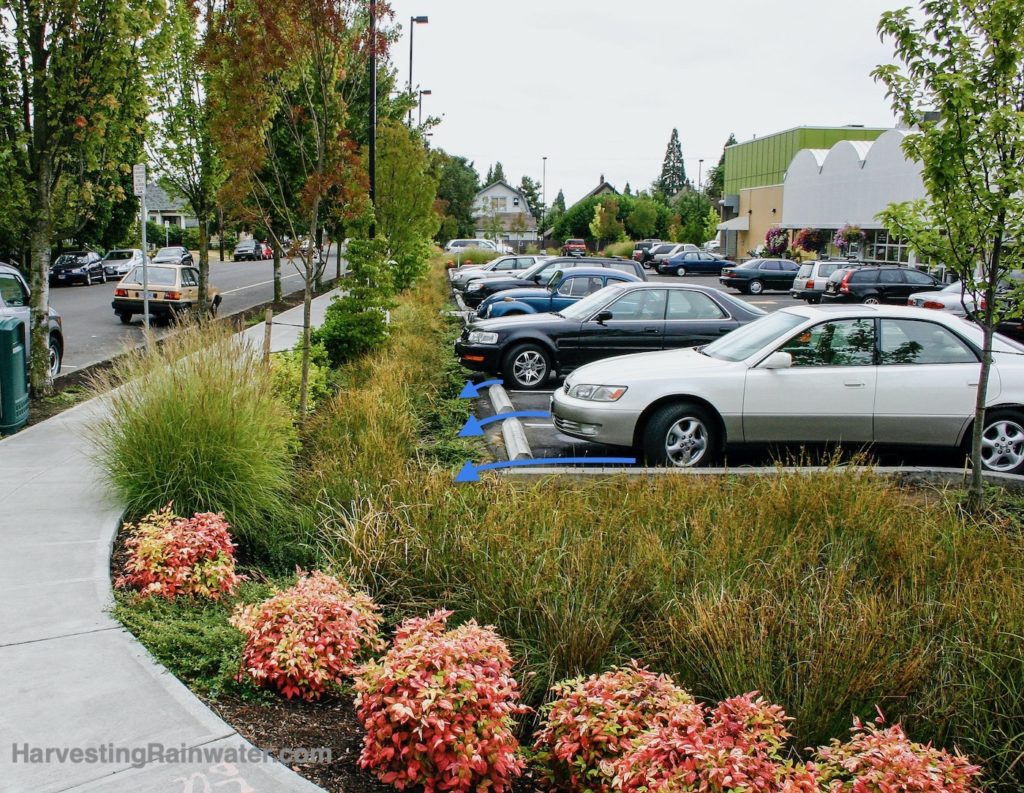
Blue arrows denote water flow.
Photo: Brad Lancaster
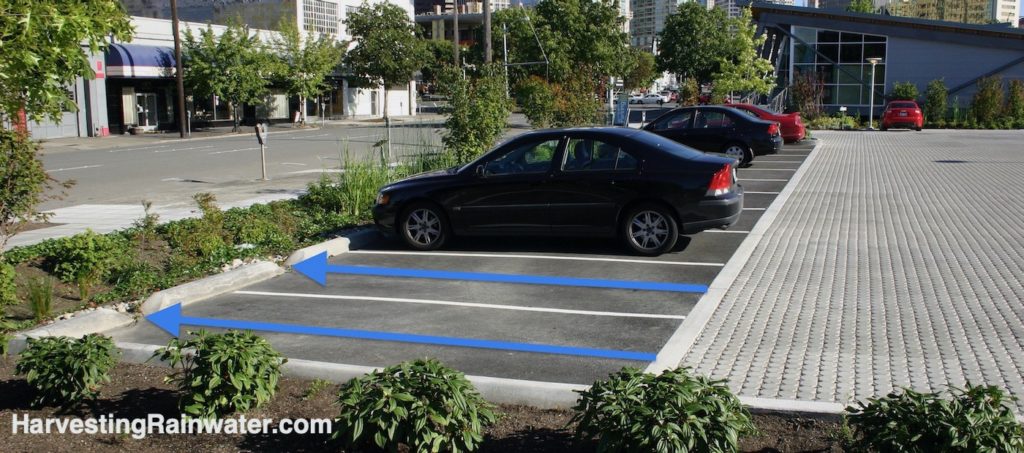
Downtown Seattle Washington.
Photo: Brad Lancaster
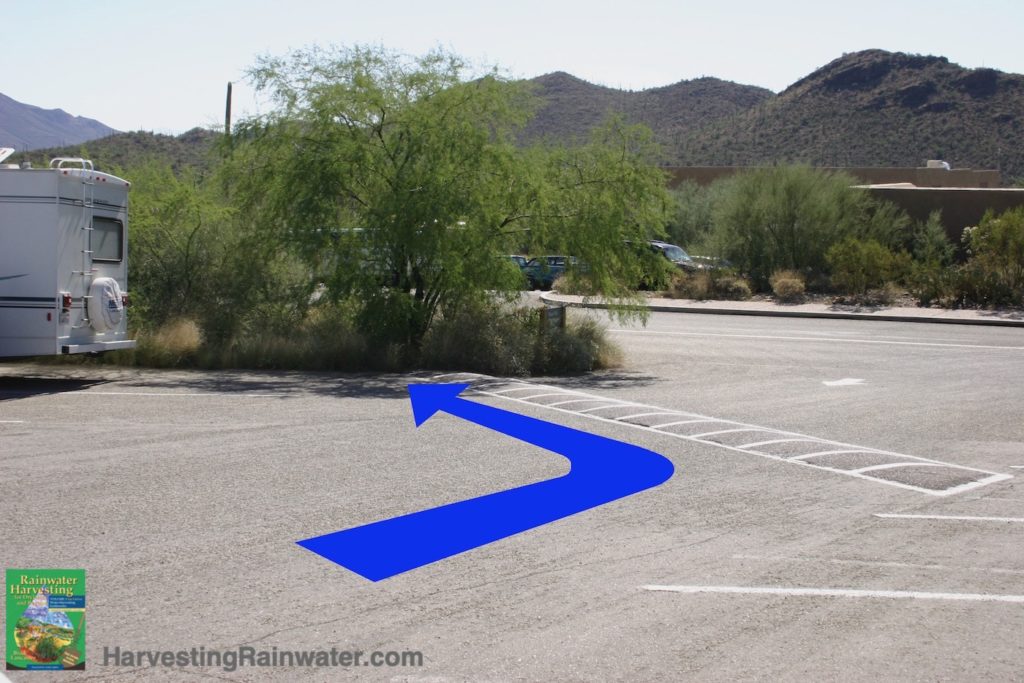
Arizona-Sonora Desert Museum, Tucson, Arizona.
Photo: Brad Lancaster
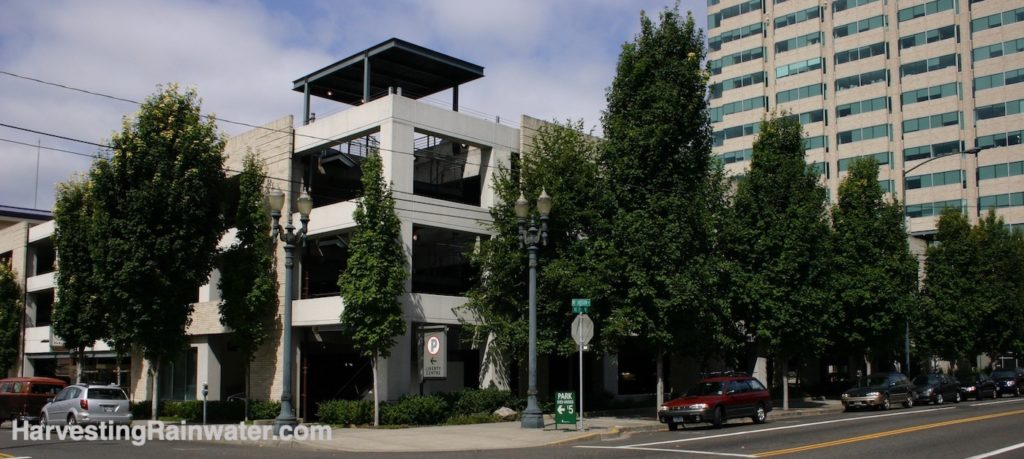
Photo: Brad Lancaster
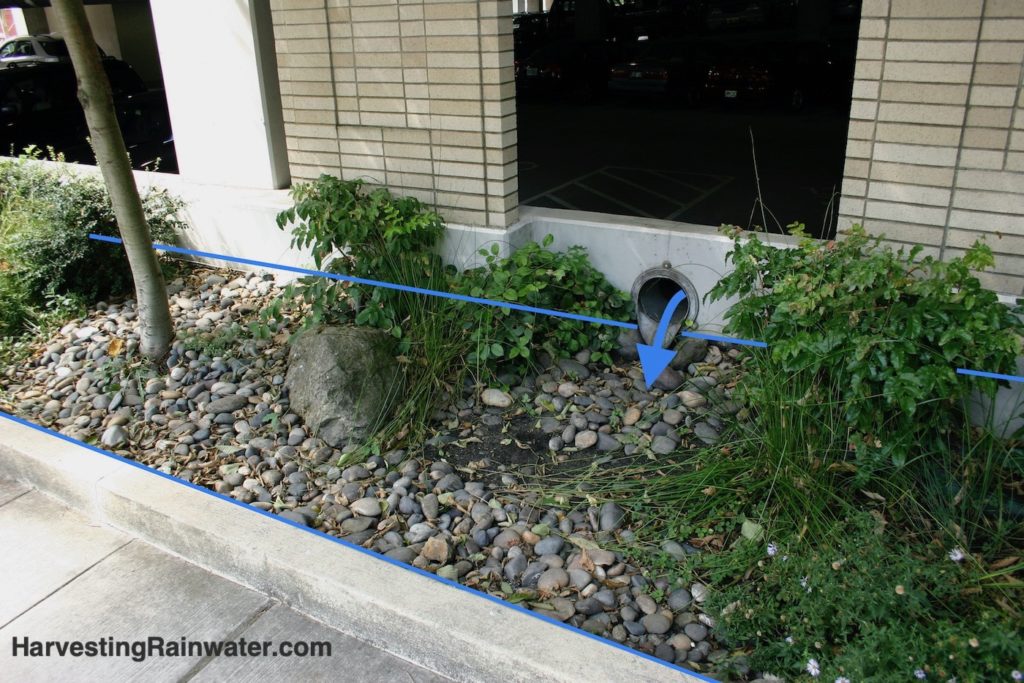
Blue arrow denotes water flow.
Blue lines denote the level to which captured water will rise before overflow.
Photo: Brad Lancaster
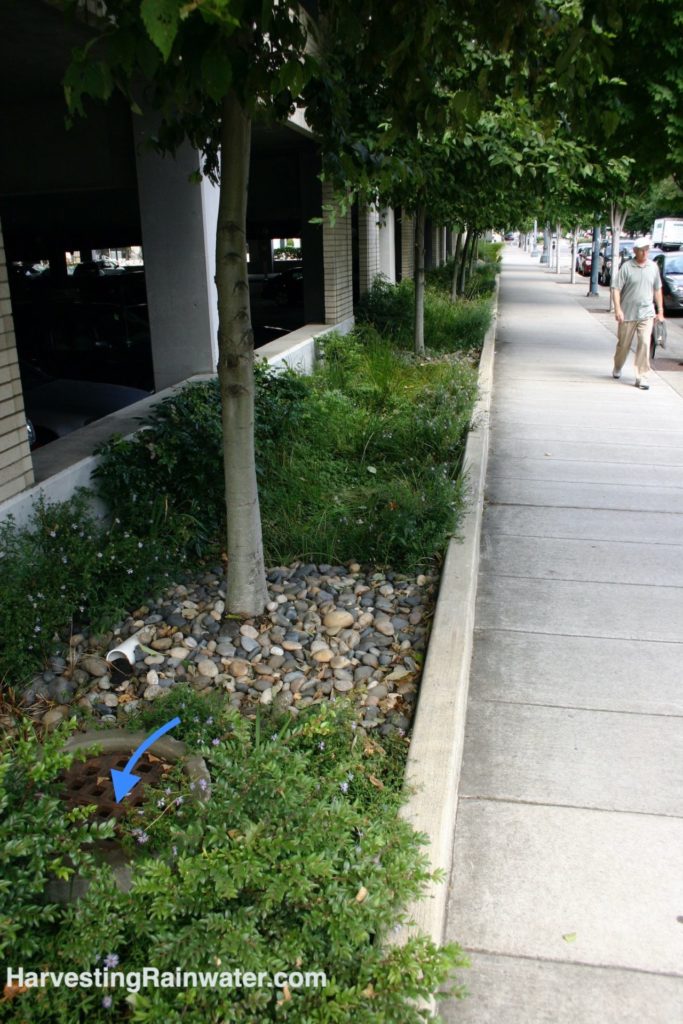
Photo: Brad Lancaster

Photo: Brad Lancaster
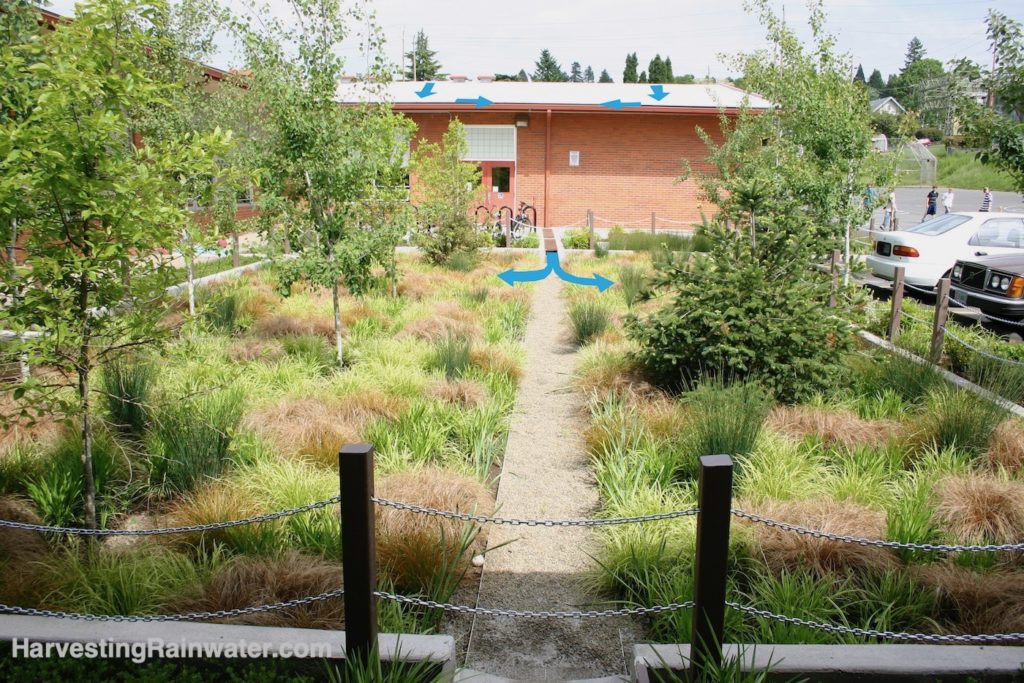
Photo: Brad Lancaster
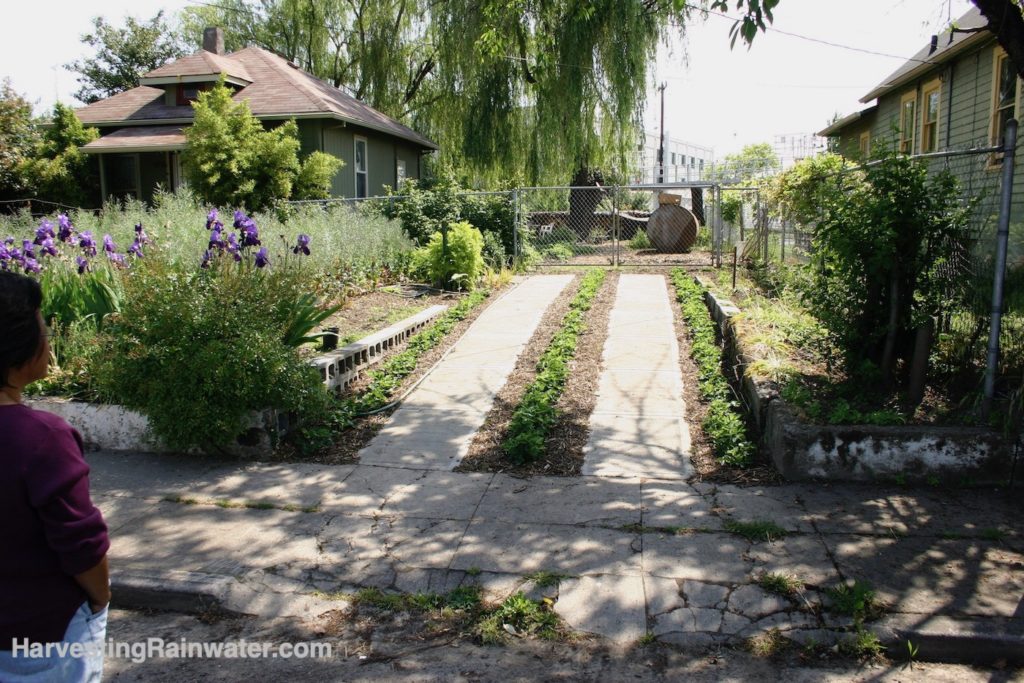
Photo: Brad Lancaster
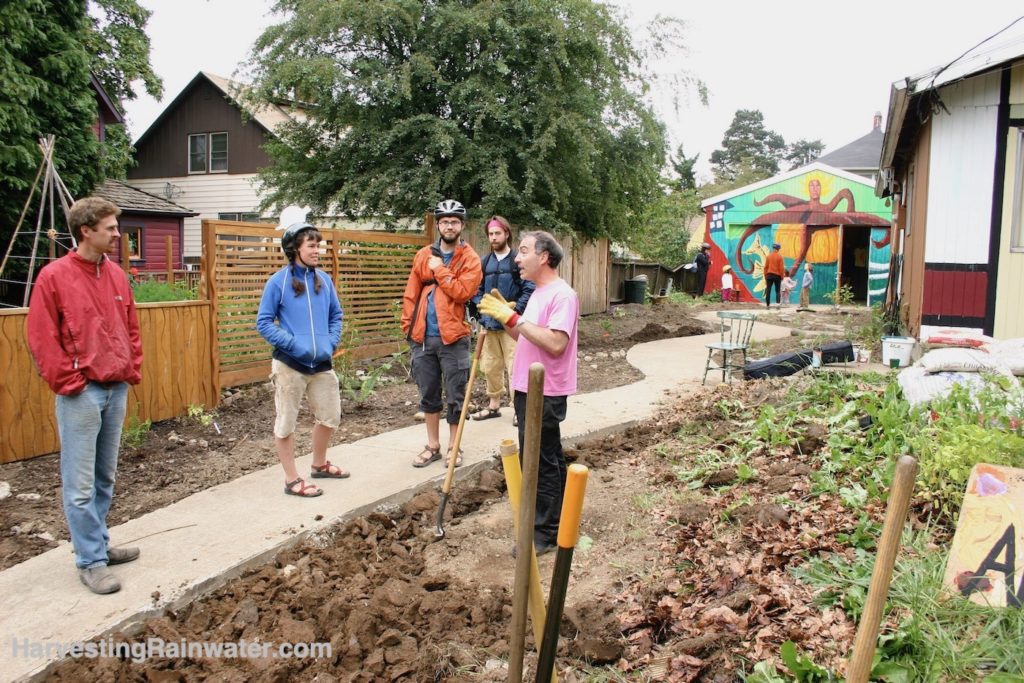
Photo: Brad Lancaster
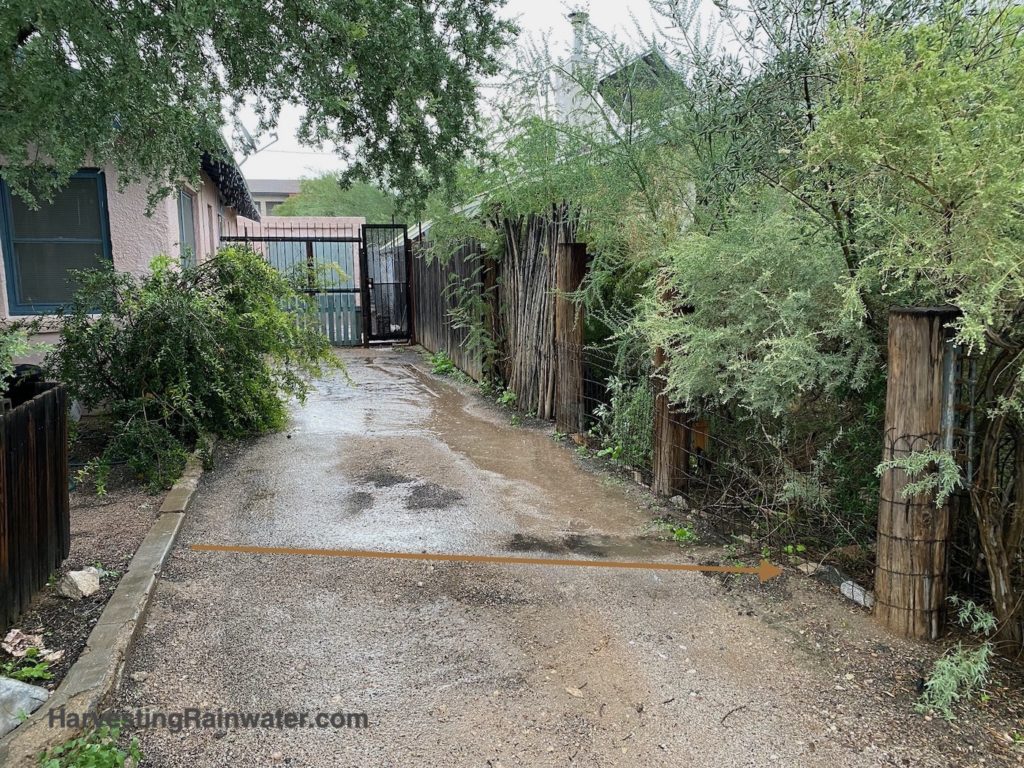
Photo: Brad Lancaster
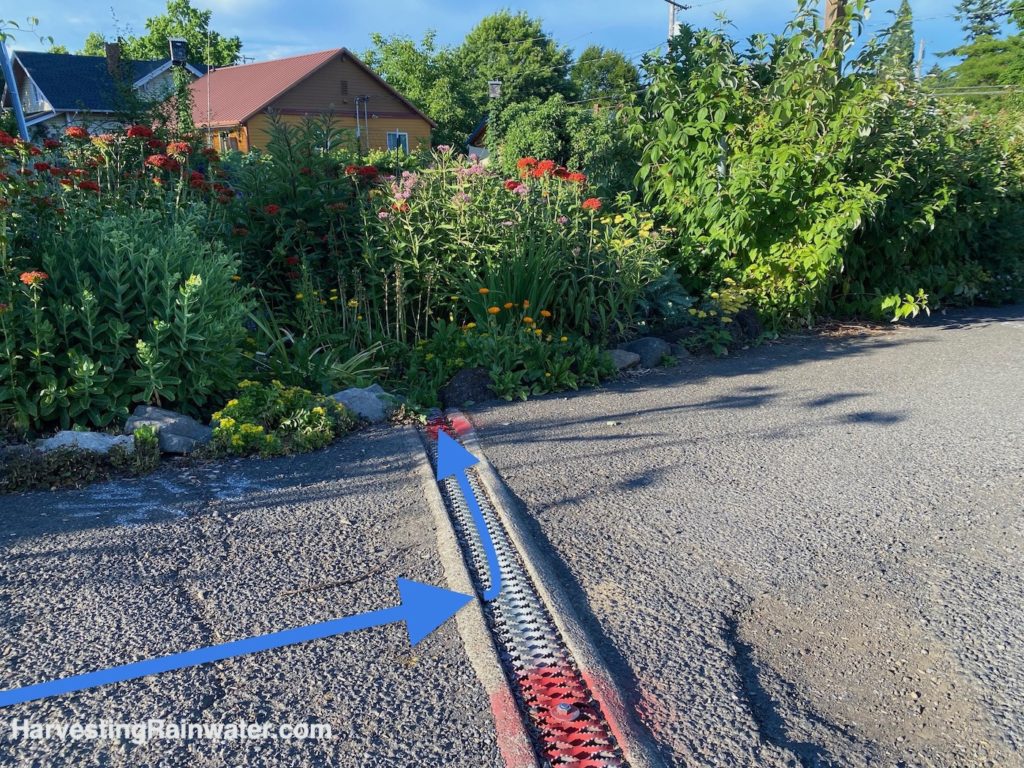
Kailash Ecovillage, Portland, Oregon
Photo: Brad Lancaster
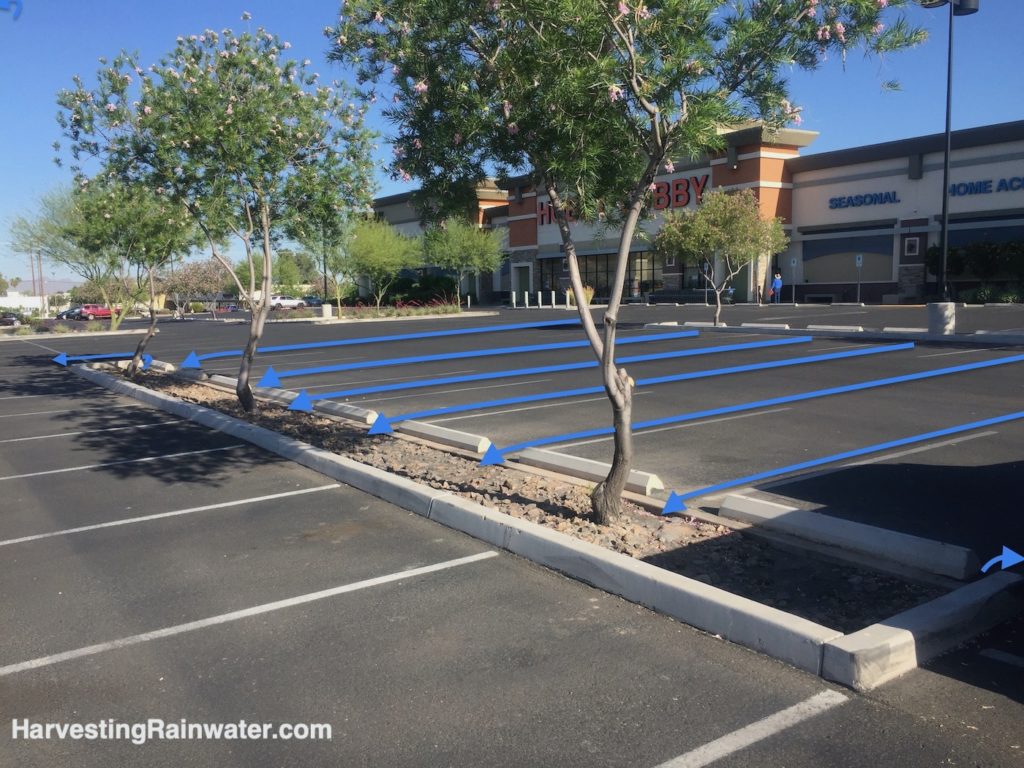
Overflow exists the two upslope edges of the raised curb on either end.
A good system, but the tree basin would ideally be much wider to capture and hold more water, while also giving the trees’ roots more aerated and less compacted soil in which to grow.
Tucson, Arizona
Photo: Brad Lancaster
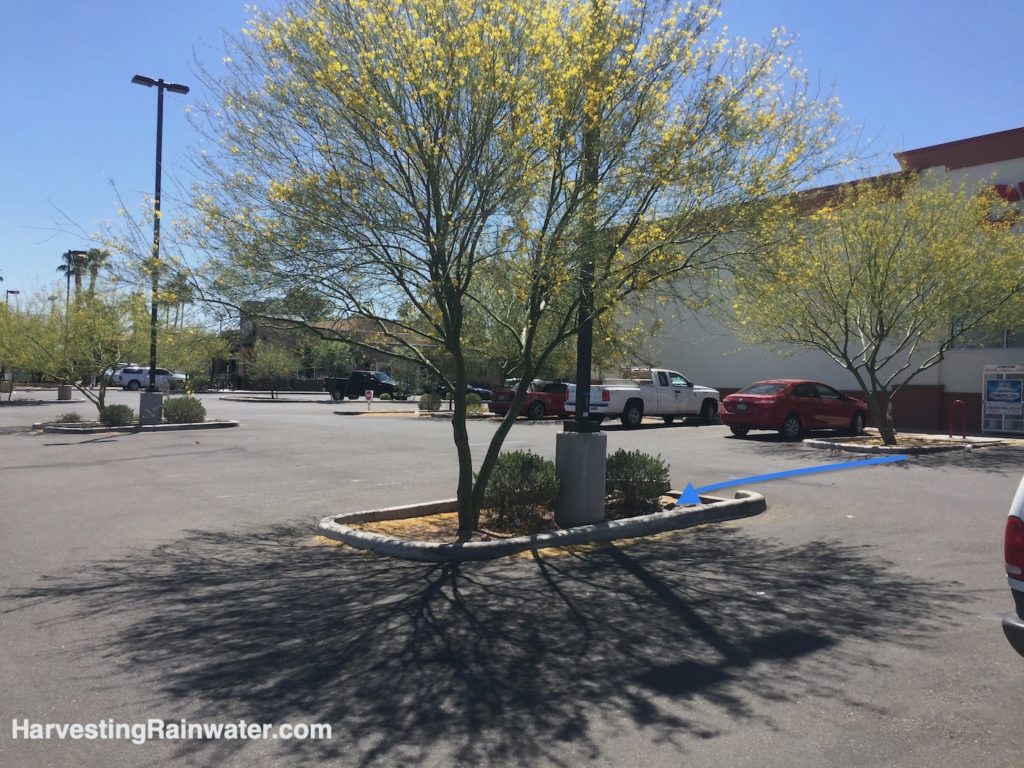
Tucson, Arizona
Photo: Brad Lancaster
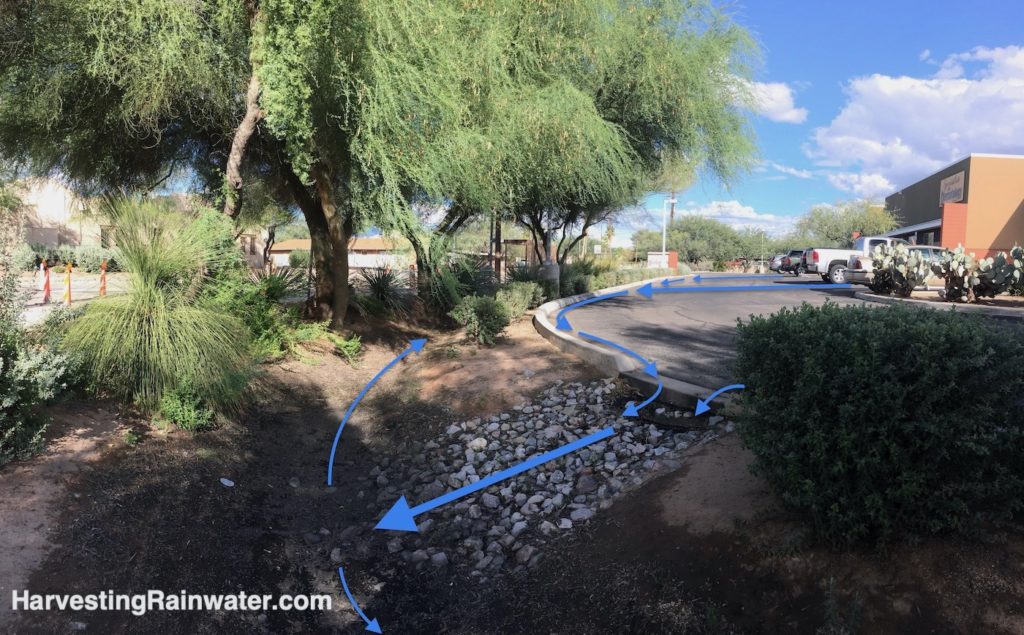
Note the bus stop shelter behind the far tree, and how this system is helping shade the shelter, bus riders, and pedestrians on the public sidewalk.
Things would be even better if roof runoff were directed to the planting area with cacti next to the building on the right. There would then be enough harvested water to freely water and grow a native shade tree to cool the building and more of the parking area.
Tucson, Arizona.
Photo: Brad Lancaster
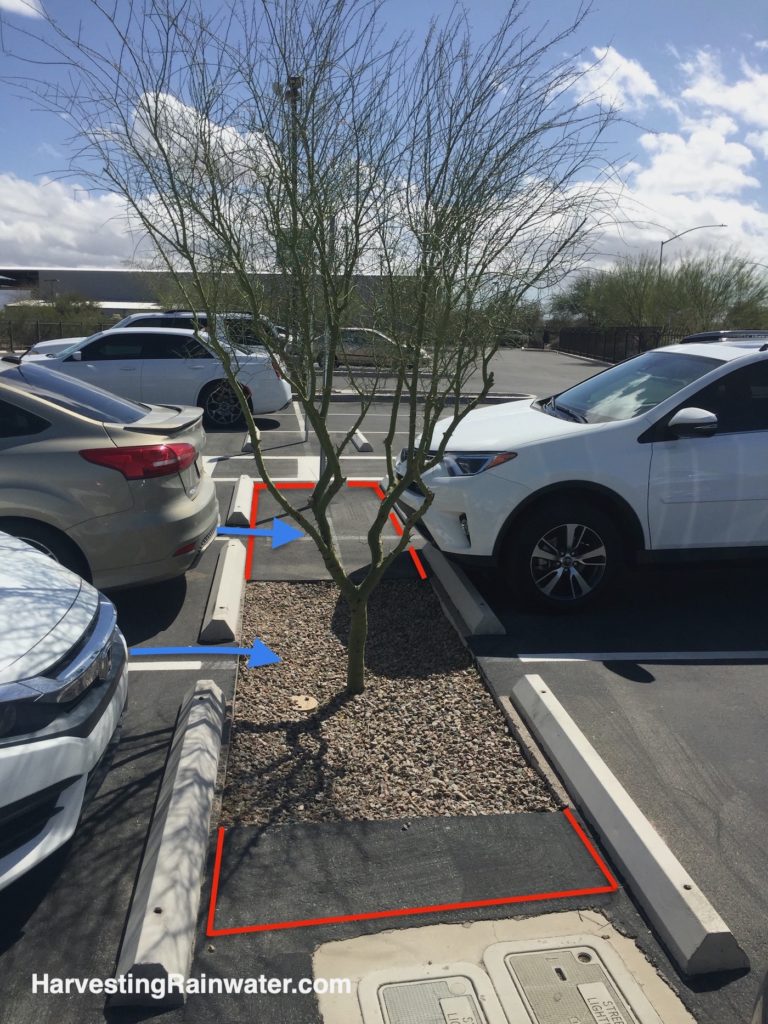
Though there are concrete wheel stops to keep vehicles from driving into the basin.
Blue arrows denote water flow.
Red lines denote how much the basin could’ve been expanded to harvest more water, better aerate the tree’s roots, and reduce the use and cost of asphalt.
Tucson, Arizona.
Photo: Brad Lancaster
For more…
See the new, full-color, revised editions of Brad’s award-winning books
– available a deep discount, direct from Brad:
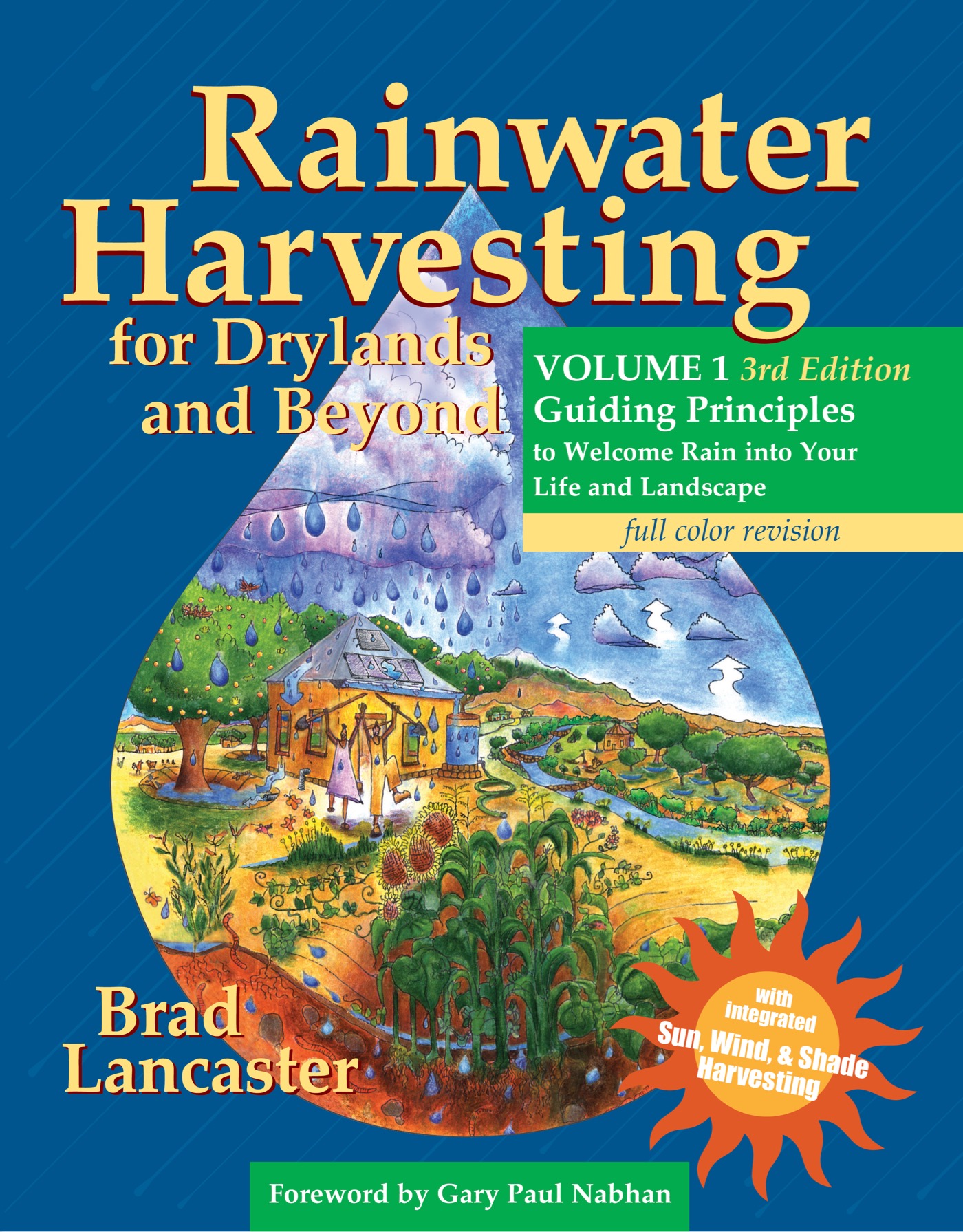
Volume 1
This is THE book to start with, giving you the integrated overview of how to make the most of all your free, on-site waters.
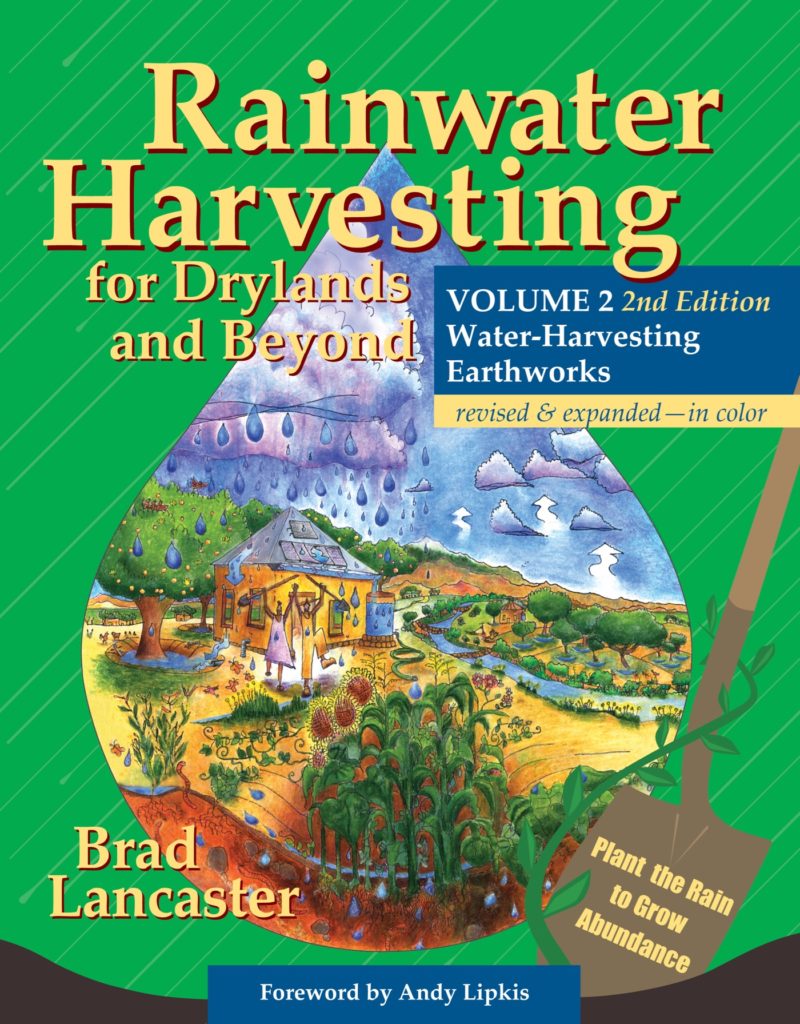
Volume 2
Lots of great strategies for many different contexts, along with the step-by-step instructions for implementation.
Be sure to read:
Chapter 9 on Diversion Swales (think diversion speed humps and daylighting previously paved waterways in the paved context).
Chapter 8 on Reducing Hardscape, Harvesting Its Runoff, and Creating Permeable Paving
